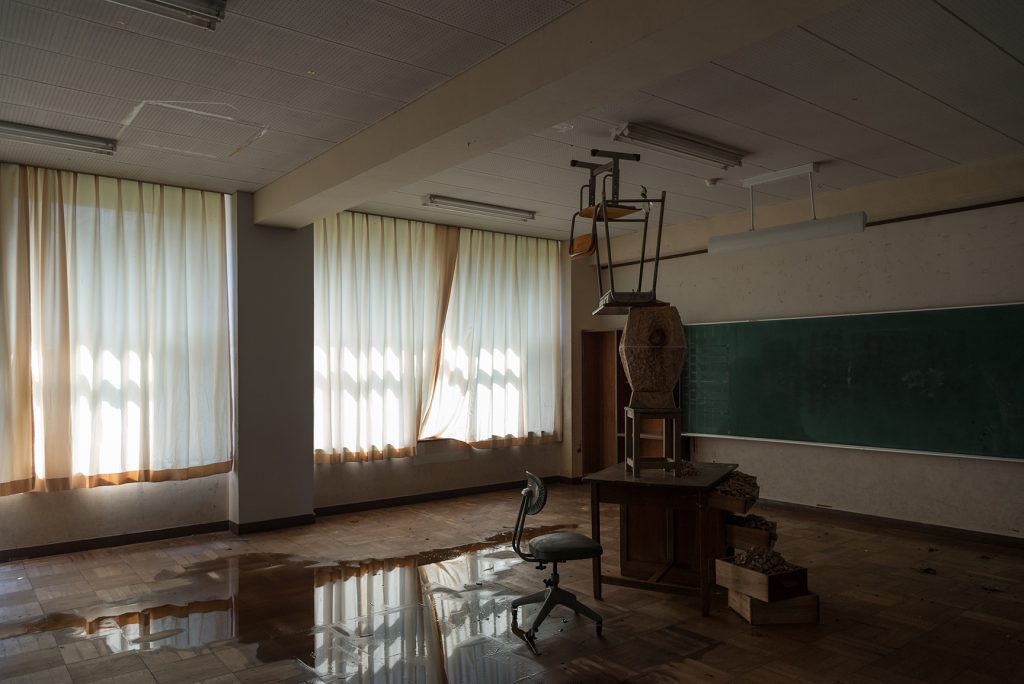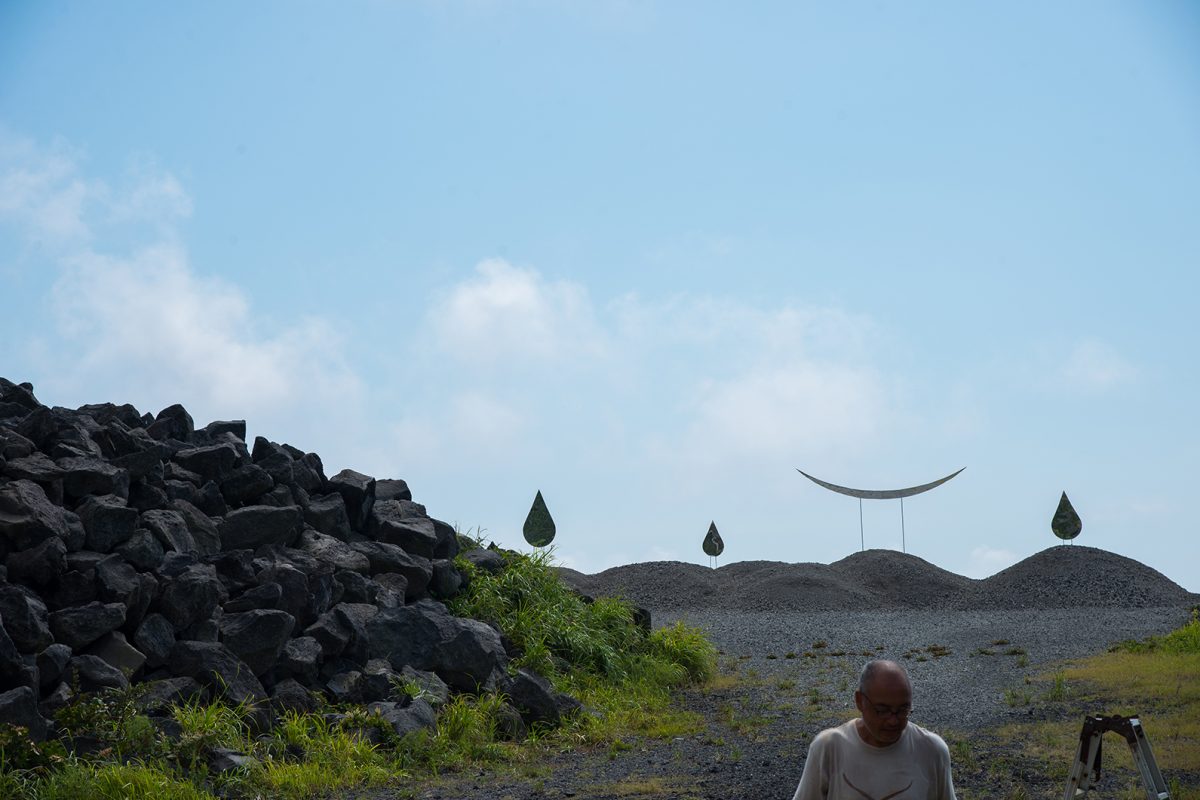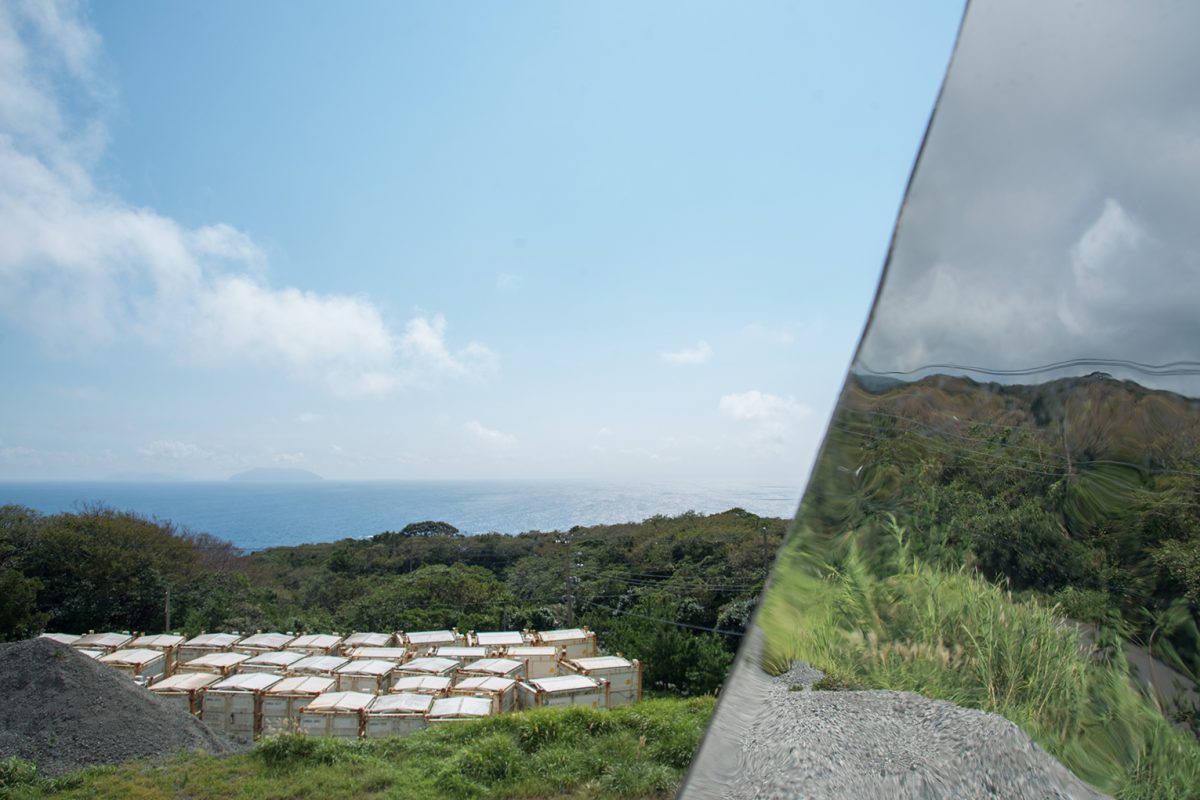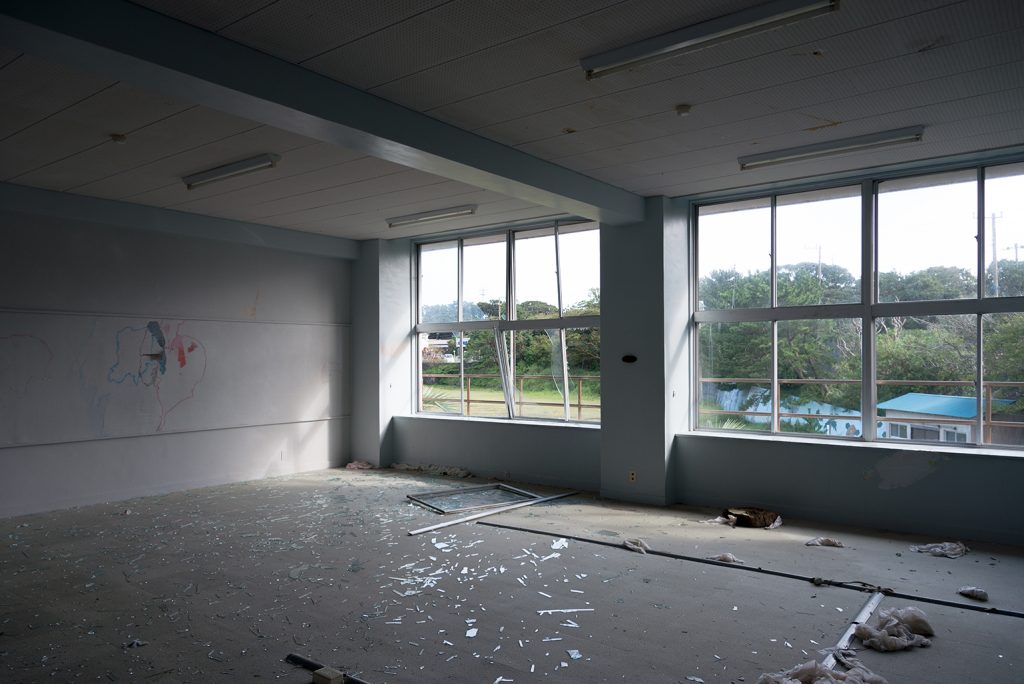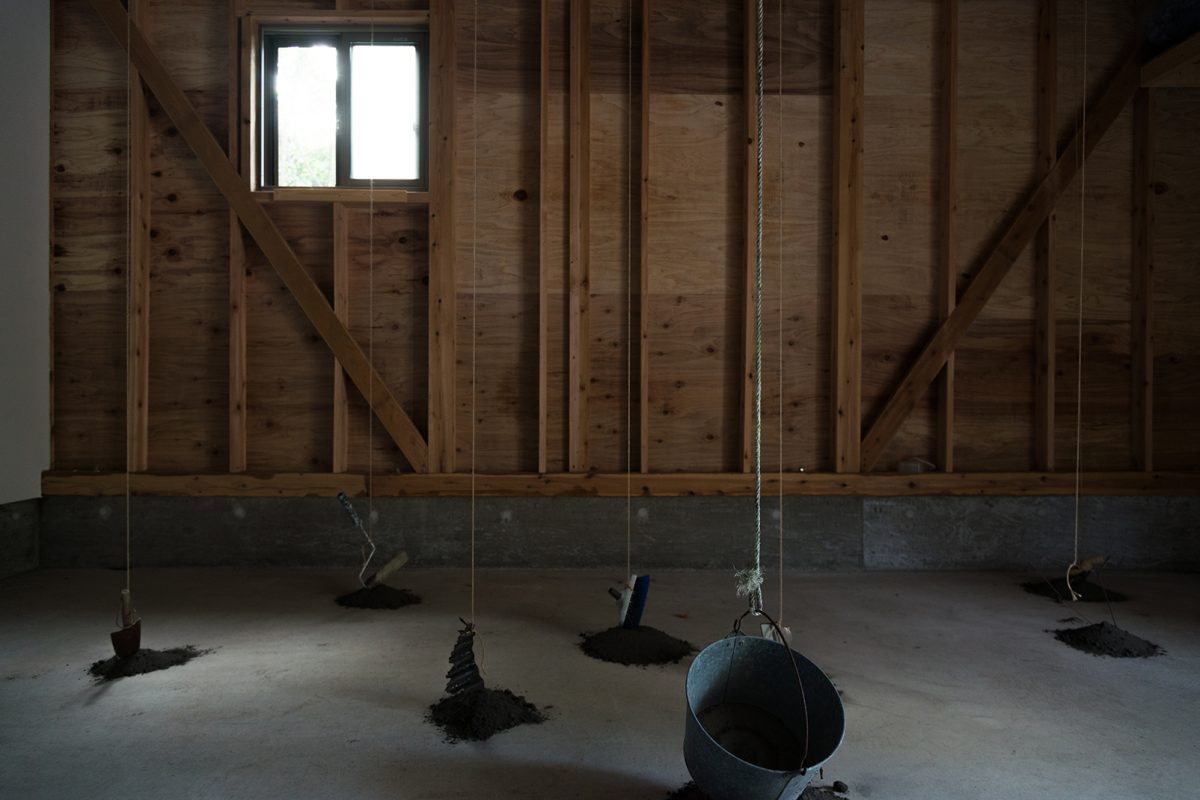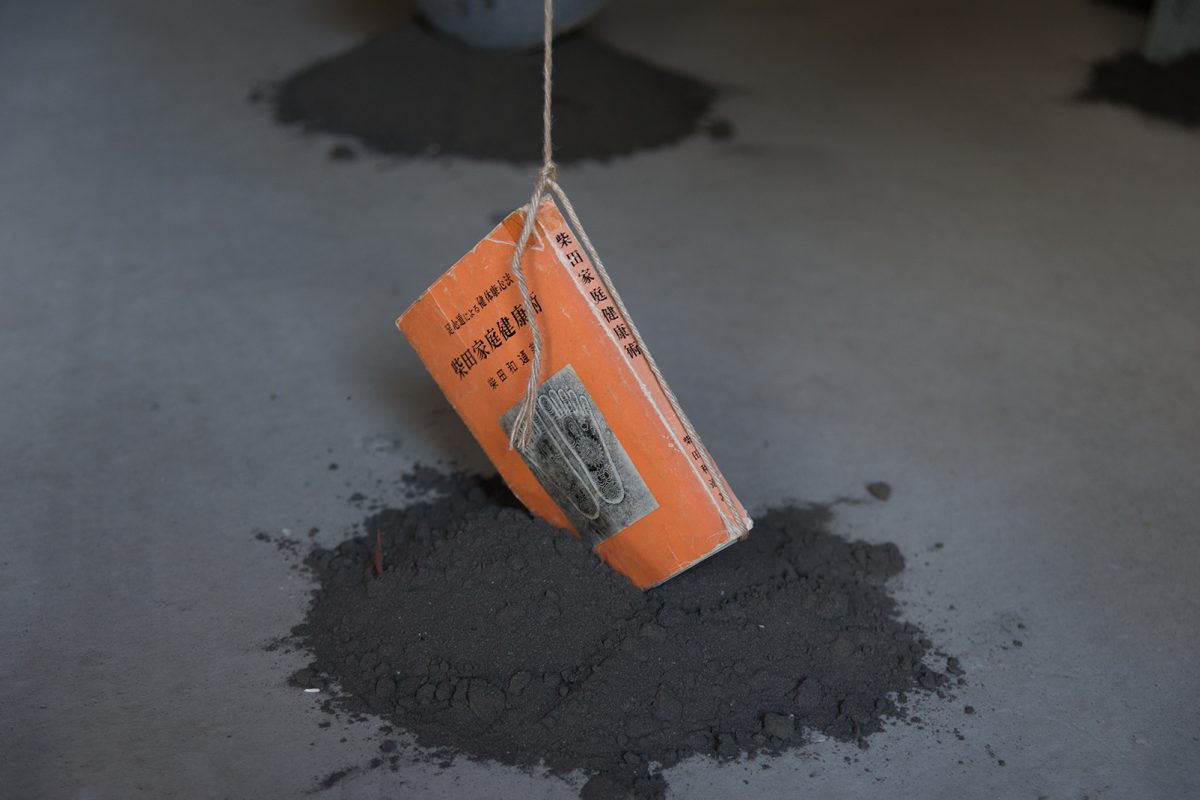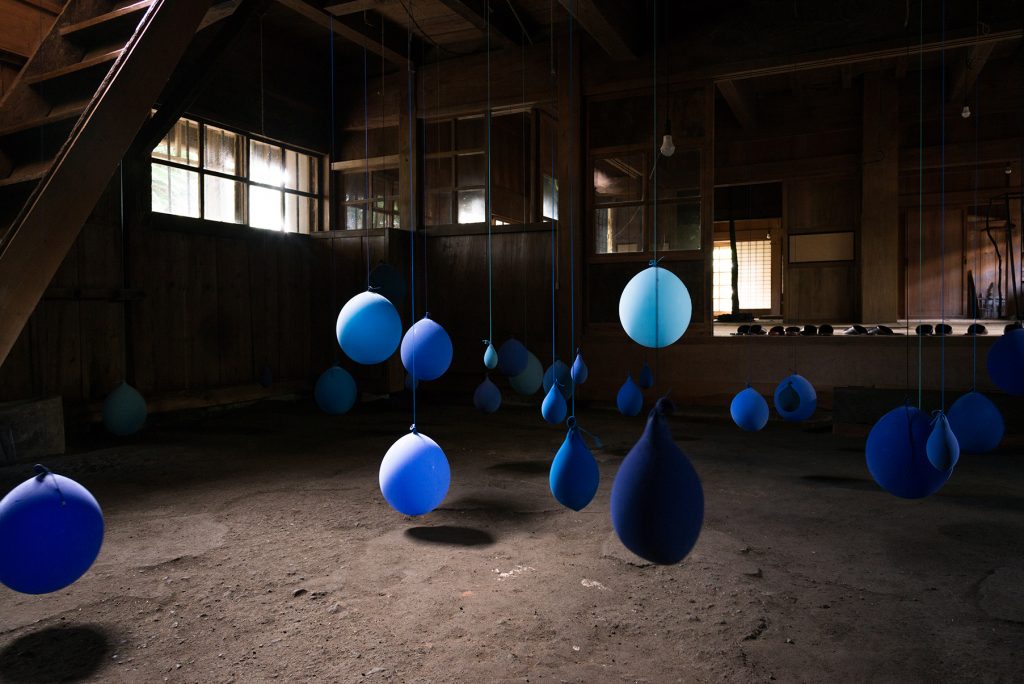REACHING THEIR 9TH EDITION THIS YEAR, ART ISLANDS TOKYO 2019 HAS KEPT ITS INDEPENDENT WAY OF ORGANIZING ART FESTIVALS, RESULTING IN INTERESTING ARTWORKS THAT ARE OUTSTANDINGLY INCORPORATED WITH THE OSHIMA ISLANDS CONTEXT
TEXT & PHOTO: NAPAT CHARITBUTRA
(For Thai, press here)
Oshima Island (full name Izu Oshima) is located approximately 120 kilometers to the south of Tokyo. The island was once the most important and affluent port cities during the Edo Era of Japan. Traces of the peak of its heyday are still visible even until now, from luxurious traditional homes, three-story high tea house that was once the workplace of over 300 hostesses. Oshima Island survived the Second World War barely bombed by the American Military (with the island’s post-war movement to declare its independence from the Japanese government). The island is now known for its natural tourism but earlier around the y ear 1920. Not only that, being such a perfect setting f or a monster story, in the film The Return of Godzilla (1984), Mount Mihara was the place the Japanese Government used to imprison Godzilla.
The mention of these stories is surely not an attempt to say that Oshima Island is more special than any other areas. While each place has its own history and it’s often reflected into interesting and meaningful artistic interpretations as seen in renowned art festivals the country has seen from Setouchi Triennale, Echigo-Tsumari Art Triennale to other independent art events that are growing in number at the moment.
One of the most distinguished characteristics of ART ISLANDS TOKYO is the artistic freedom it offers the artist. In terms of its growth, ART ISLANDS TOKYO was first held in 2011 with Japanese artist, Yoshiki Takata, leading the operation. “It started off very simple. I attended an exhibition overseas and met a lot of my artist friends who expressed an interest of organizing a show in Japan. With the limited financial support I had at the time, I chose Oshima as the venue.” Takata told art4d that he saw certain potentials in the island, particularly the unoccupied spaces that would welcome artists to engage and artworks to make their presence.
“The island’s population has seen significant drop. 30 years ago, Oshima used to be the home of 12,000 people and now there are only 7,600 people living on the island because the younger generation are moving to Tokyo.” The unoccupied spaces on the island are originated from the same classic issue that every rural area in Japan is facing. The decrease of population has caused several homes on the island to be deserted, and a number of schools had to be shut down. One of them is Oshima Municipal Former Habu Elementary School, which has been used as one of the event’s main venues and operation base in the past years, along with The Jinnomaru House, a massive Japanese traditional home that was once owned by Oshima Island’s wealthiest man.
Since its humble beginning in 2011 when the artworks were showcased in a number of small-scale exhibitions scattered throughout the area of Habu Port, ART ISLANDS TOKYO gradually grows into an art event of international scale from Takata’s personal connection with his artist friends. The event now expands its artistic territory to the surrounding islands including Niijima Islands and Shikinejima Island. This year marks the 9th year of the event, welcoming 29 artists in total.
“We don’t want to define it with some big word like art festival. I look at it as something more like an artist in residence project on Oshima Island.” Takata runs the program by inviting artists to live on the island. He told art4d that the most important condition for an artist who participates in ART ISLANDS TOKYO is he or she needs to come to the island empty handed. They will be living on the island where commuting is a challenge and they will work with the area, the atmosphere, the history from zero, using only materials available in the area. It’s a challenging condition for some artists and it is probably one of the factors why many of the site specific pieces showcased at this year’s event are less striking in terms of visual but interestingly interact with their surrounding context.
Katachi no hajimari, Kotoba no hajimari (2019) by Junichi Nagata is one of the works that embody such characteristic. It plays with the context through the nature of the site where piles of discarded construction materials and wastes covered in dust become the setting for the artwork. A sheet of steel is cut in abstract form and planted on a pile of stones. “My question is what the very first form or word ever invented or created by a human being,” said the artist to art4d before further elaborated. “Some people look at it and see the bottom part of a circle. Others see it as the moon, what do you think it is?” At first glance, the work reminded us of a torii of a Shinto Shrine before we finally started to see the reflection of the sky and the fading image of the natural woodland, with the entire mass of the limestone mountain we climbed up earlier that stands in a corresponding presence with other islands situating in the middle of the very same sea.
The ‘past’ is the subject interestingly recounted in Harue Takami’s work. The artist creates Between Sky and Earth (2019), which references itself to Odorikonosato Museum, in which she chooses as the venue for her work. The museum is the three-story tea house mentioned earlier in the first paragraph. Currently, the area is curated into a program that simulates the tea house’s activities several centuries back, showing a bunch of Geisha figures providing services to the tea house’s visitors. The artist chooses the maid’s room at the end of the corridor on the second floor as the exhibition space. Covering the entire floor of the room are small pieces of clothes in the color yellow, green, red, white and purple with the collective weight of 20 kilograms. While we’re uncertain about the cultural meanings behind these colors, we assume that they may have some association with the tea house one way or the other considering the fact that the artist’s mother was a former geisha.
Sara Cohen is also one of the artists whose work delves into a memory of place. As a landscape of forgotten elements (2019) is located in one of the classrooms of Oshima Municipal Former Habu Elementary School, which is used as the exhibition space for each of the artists’ works. “I thought about my childhood classroom and there was a game that we used to play as a kid.” Some of us must have thrown wet papers to the ceiling just to kill the boredom when we were students. Cohen recreates these traces in a deserted classroom. The papers are created into different shapes and forms before they are placed on the walls and ceiling. It was both an unfortunate and interesting incident that we were unable to see the wet papers in their original forms. Arriving the island two days after the Typhoon Faxai hit Tokyo, the windows of the exhibition were shattered, shards scattered throughout the carpeted floor and the artwork didn’t make it through the storm. To us, As a landscape of forgotten elements becomes the traces of the traces of the past. On the bright side, the typhoon somehow made Cohen’s work really become a part of the deserted-ness of the classroom itself.
Many of the works talk about nature while several of them were also destroyed by nature. With Island-hopping (2019), Ayumi Tonokura collects the ashes from different volcanoes and uses them as the substance of lava watercolor paint for her painting. A 10 million-yen worth abstract painting by the late, renowned Japanese artist, Sadaharu Horio is among the works destroyed by the storm. Among the works that make it are EARTH (2019) by Katsuyoshi Ogata that plays with the presence of electrical cords found on the island. The artist wraps 500-meter-long bamboo strip around a natural woodland (which is surrounded by a concrete road), conveying the transforming power of nature and representing the forest’s weakening pulse.
ART ISLANDS TOKYO’s artistic freedom gives birth to a culture and interesting collaborative approach where there is no curator to set a theme for artists to follow. The contents are created through discussions between artists themselves while the co-living experience is, in a way, a mechanism that naturally shapes how each artist works and creates art.
It remains to be seen what will ART ISLANDS TOKYO grow to become in the next five years, but we do think that it’s the perfect place and opportunity for young generation of Thai artists who are looking to work with beautiful sites, interesting contexts and incredibly open work environment. Send out your application and perhaps we’ll be seeing your work at ART ISLANDS TOKYO 2020.


